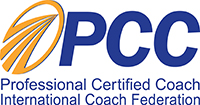This post is an extract from my newsletter: The Question.
Life seems to follow a twofold movement.
One is an outward movement. It moves from inside to outside. We take something from “in here”—our ideas, thoughts, dreams—and, through words and actions, give form to them outside of ourselves. It’s a bringing forth, a folding out.
The other movement is an inward one. It moves from outside to inside. We receive something from “out there”—sensory stimuli, people, music, news, art—and we allow it to enter into us and to become us. It’s a bringing into, a folding in.
We can’t help but take part in this twofold movement. We give and we receive, back and forth, day after day.
We can, however, approach this twofold movement in different ways.
How do we unfold?
And how do we infold?
We are all bakers, kneading the dough of work and our lives.
Dough is a simple enough composition: flour, water, yeast, and a pinch of salt.
Yet important as these ingredients are, they remain nothing but materials without two crucial additions.
Time and movement.
Dough is alive. The yeast holds within it the seeds of the bread’s life. And, like any life, it needs air, time, and movement to breathe and to grow.
The same is true for us. Our dough is alive. We need more than just the right ingredients to grow and to become. We need time and movement, too.
If we don’t roll out our dough, it will remain a hard ball of unfulfilled potential.
If we don’t fold the dough back in, it will remain a flat, static surface.
So, we knead our dough.
We express outwardly and we learn inwardly. We change how things look outside and we update what they mean inside.
We fold out and we fold in.
That is what we do. This is what we are.
That is not nothing. Perhaps it is close to everything.
“As the music unfolds, the meaning infolds,” says Bonnitta Roy.
Each unfolding note changes the infolded meaning of the notes that come after.
Some of us play notes without listening to what they mean. Constantly expressing and creating, we don’t stop to integrate what it all means.
Others of us listen with open ears, making deep meaning of what we hear, but never daring to play the music that is ours to make.
We live in a world which promotes folding out.
We forget about folding in. Instead, we seek to express and change, craving constant improvement and fixing.
It can seem like a good enough idea on the surface. Who doesn’t want to make things better? Who would argue that improvement isn’t good? Who wouldn’t want to remove the nasty, uncomfortable bits of our experience?
But our lunge toward fixing at the earliest sign of a problem is more often than not a movement of exclusion.
It’s all expression, with no inclusion. It doesn’t fold in what is actually happening.
Fixing, improving, even creating without folding in is steamrolling over the nature of things. It’s a blind attempt to change a reality that isn’t there.
When we immediately and instinctively leap to conclusions and judgements about others—whether it be politicians, government responses, our bosses, our partners—we steamroll ourselves and our world.
We exclude. We deny. We separate.
What if we dared to include?
Folding in is the movement of inclusion.
As with dough, it’s the act of bringing it all back together again – even the smallest and stickiest bits of dough that cling on for dear life on the cutting board.
Inclusion is not a passive stance. It’s participatory.
The mere act of inclusive acknowledgement and observation changes things. Literally.
An electron is a wave until we observe it. Then it becomes a particle.
With intention and awareness we bring form to potential. No intention and no observation means no matter.
To bring forth in form, we must include.
Our relationships matter.
And, as the electron shows, our relationships make matter.
As we relate and include, we bring out and we bring forth. “We midwife reality into being,” as Iain McGilchrist says.
Folding in is folding out.
What if we folded in more?
What if, when faced with challenges, we included them as information?
What if we fully appreciated the existence of our difficulties – not to stop change from happening, but to allow for change to unfold more fully?
What if we folded out more in response to what we fold in?
How might our own worlds, and the world, change if we folded out even more of what we are, and of what we include?
What are you folding out?
What are you folding in?
What are you not folding out?
What are you not folding in?
This post is an extract from my newsletter: The Question.
